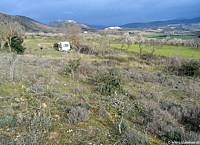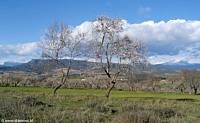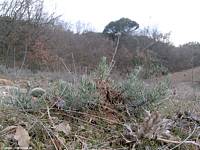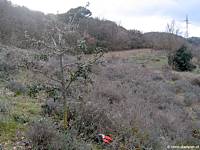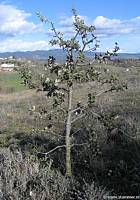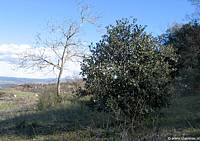|
|
Nature
Switched On
|
|
|
introduction |
2007 February 24 &25, Saturday & Sunday
We saw quite a lot of wild bees, probably one of the
first insects to take advantage of the almond flowers.
Other insects that had waken up from the winter lethargy were the ants. They were extremely busy carrying all kinds of materials to their hill, here on a plant still to be identified.
|
Looking north-west from the high centre. In the foreground some pruned Kermes Oaks (see next paragraph). Sunday 9:51 |
|
Looking north. Two almond trees.
|
||
|
Looking west in the central higher part.
|
||
|
This weekend I undertook the pruning of a dozen of Kermes Oaks (Quercus
coccifera).
|
Looking south-east in the centre. A young Kermes Oak. Sunday 16:32 |
|
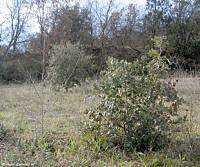 The species reacts very well to pruning. On the balcony of our flat in Zaragoza I have been growing and pruning two plants as a kind of Bonsai for many years. I decided to do the same to some specimen on the terrain but with the almost opposite purpose of growing a relatively tall tree out of them. In fact under specific circumstances this oak can grow into a tree of up to 5 metres 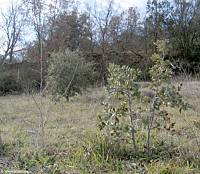 in Spain.
in Spain. What I pretend to do is favouring the growth of only one or two trunks and pruning the plants into a relatively open tree structure exposing its beautiful smooth bark. On the next photograph on the left you can see the result. The remaining 'skeleton' of the herb on the left is a Skeletonweed (Chondrilla juncea).
|
||
| Before and ... | ||
| ...after the pruning. | ||
|
Below some images of an older specimen after the treatment.
|
||
|
Looking west respectively east, in the centre. The same Oak
on Saturday 18:02 resp. Sunday 16:18. |
||
|
Sometimes the Kermes Oak
develops into a very dense and s |
|
|
|
Looking south-east in the
centre. Kermes Oak with a Walnut tree on the left. Sunday 16:23 |
||
|
introduction
|
|
